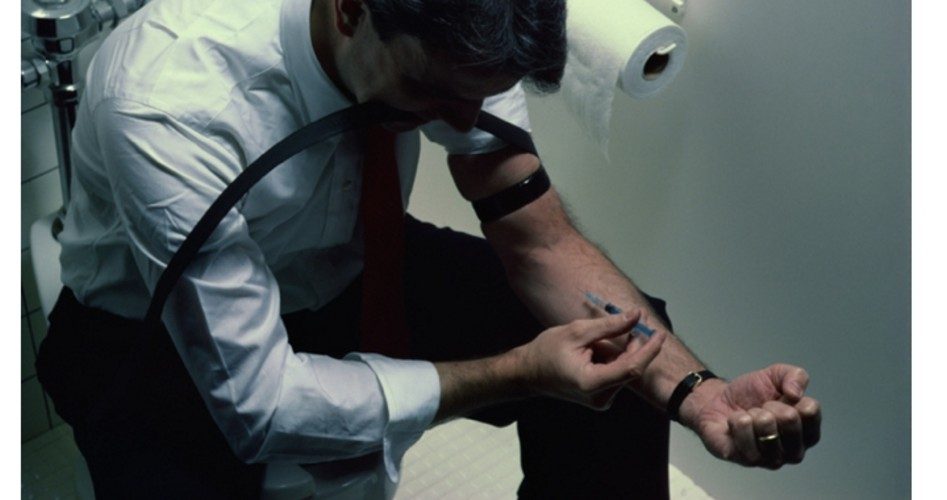
Svante Myrick, mayor of Ithaca, New York, has proposed a controversial plan to open up a supervised facility in which heroin users can “safely” use heroin. Fox News reports that the facility would be monitored by healthcare professionals who can provide clean needles to drug users and monitor their injection of heroin, while also providing them information on addiction services.
“Using heroin is bad for you,” Mayor Myrick told the Huffington Post. “Dying from an overdose is even worse. We have to keep people alive and get them the resources to get clean. They won’t get those resources in public bathrooms and behind dumpsters in alleys.”
Mayor Myrick defends his program by referring to his own family’s personal experience with addiction. “My father was a drug addict. He split from the family when I was 5, 6 years old,” Myrick told the AP. “I have watched for 20 years this system that just doesn’t work. We can’t wait anymore for the federal government. We have people shooting up in alleys. In bathroom stalls. And too many of them are dying.”
Myrick’s proposal is part of a larger drug plan, which calls for heroin-assisted treatment and the creation of a 24-hour crisis center, the Huffington Post reports.
Fox News observes that the growing heroin epidemic has gained national attention, even serving as a prominent topic during the recent primaries in New Hampshire, where heroin use has increased.
According to the National Institutes of Health, from 2002 to 2014, heroin overdoses in the United States increased dramatically, from just over 2,000 to approximately 11,000. In New York alone, heroin overdoses increased from 215 in 2008 to 478 in 2012, the Centers for Disease Control and Prevention reports.
In Ithaca, heroin has become a growing concern for law enforcement. During a presentation on Monday at the Tompkins County Public Library at which Ithaca’s heroin problem was more closely examined, Ithaca Police Investigator Kevin McKenna noted, “By far and wide, heroin is probably the worst drug on the street that we have here in Ithaca.”
The presentation, organized by the Community Coalition for Healthy Youth, featured a panel of experts from various organizations including the Alcohol and Drug Council and the Cayuga Addiction Recovery Services. The Ithaca Journal reports that the crowd was larger than the room could accommodate.
Presenters acknowledged that heroin use has increased because it has become a more affordable drug. “The amount of heroin that’s become available in the past two years has significantly rose, thus dropping the prices,” McKenna said. “Nowadays, most heroin in the street is being sold as a bulk product.”
Tompkins County District Attorney Gwen Wilkinson believes that the government needs “a new perspective on public safety.”
“Massive amounts of government resources have been expended and millions of people have been incarcerated, with outrageous racial disparities,” Wilkinson said in a statement. “Despite this, drugs are still pouring into our community.”
Myrick’s facility, if approved, would be the first supervised injection facility in the United States. While there are approximately 100 of these facilities worldwide, the only facility of its kind in North America is located in Vancouver, on which Fox News reports:
That facility, Insite, has been largely seen as a success in Canada for the past 13 years. More people are seeking treatment, HIV transmission from needle sharing has dropped and fewer people are injecting drugs, according to a report which analyzed 15 years of drug data and was cited by the Vancouver Sun in a 2013 article. Legal challenges to close Insite have been futile and Prime Minister Justin Trudeau has said he wants to see more injection sites.
But despite the touted success of the Vancouver site, Fox News observes that efforts to open such facilities in New York City and San Francisco have failed.
However, lawmakers in other cities are beginning to express an interest in setting up injection sites. The Huffington Post notes that Seattle’s mayor has stated he would consider coordinating safe drug sites, and Dan Morhaim, a physician who serves in Maryland’s House of Delegates, introduced a bill with similar measures in early February.
Supporters of such facilities contend that they represent an acknowledgment that drug addiction is a public health issue. One such proponent is Kassandra Frederique, director of the New York policy office for the Drug Policy Alliance. “It’s no longer a fringe issue,” Frederique said. “It’s being talked about at every kitchen table in the country, and people are realizing that what we’ve done in the last 40 years hasn’t been very successful. People around the country are saying they want a new approach. They want something that moves this into a health issue.”
Frederique recognizes the difficulty in selling the public on the idea, but believes that local communities have been made aware of the growing heroin problem and may be more open to alternative options. “It’s unfortunate that we have to get to a crisis before we put in the resources,” Frederique said. “When you have a primetime presidential debate about heroin, and drugs, and treatment, and intervention, we realize people want to shift the debate into ‘What can we do different?’ This is affecting everyone from rural communities in Montana to communities in the south Bronx.”
But according to William Jacobson, professor at Cornell Law School in Ithaca, it’s not as simple as that. In addition to the ethical questions related to Myrick’s proposal, there are a number of legal issues to consider as well, particularly since the facility would be operating in direct violation of Title 21 of the Controlled Substances Act which states that “maintaining drug-involved premises” is “unlawful.”
“I think it opens up potential liability,” Jacobson said. “I would think the city would also want to check with its insurers to make sure if there’s a claim raised if someone is injured or overdoses the city is not liable. There are multiple levels of legal issues that have to be considered — putting aside the public policy issue of whether, in fact, this is a good thing.”
And opponents of Myrick’s proposal view it as merely a taxpayer-funded campaign to encourage drug use.




